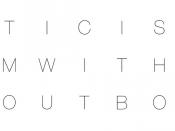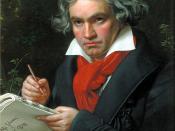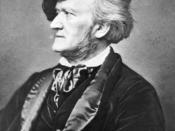The Music of the classical and Romantic era is a period of time where it shows the development and different styles of music. This can be shown through the manipulation of musical elements, (dynamics, pitch, tempo, rhythm, texture, meter, tonality, structure, melody, harmony, instrument) while contrasting them, but it can also be shown through the composers of the music, the size of the orchestra, musical directions, emotional content, and non-musical developments through that period of time.
After the Renaissance and the Baroque era, the Classical era soon followed at around the 1720-1820's. During these times in Europe, there were many non musical developments, ideas of the enlightenment, political issues, scientific discoveries and the reexamination of established ideas, including the existence of God. Many of these ideas and has got huge impact on the heavy Monumental baroque style and later developed with a more intimate rococo style, with its light colors, curved lines, and graceful ornaments, which greatly resembles the classical period.
Shortly after the Classical period, the Romantic era appeared during the 1820-1900's. At these times, non-musical developments such as cultural movements strongly expressed emotion, imagination, and individuality. People such as Romantic painters and writer often emphasized the freedom of expression; they often saw political revolution as a reflection of their own struggles for artistic freedom. This had made a huge impact on Romantic music, because the emotional subjectivity turned into a basic quality of Romanticism.
Comparing the musical elements of Classical era and Romantic era, we would notice the many differences, and hence we can identify and recognize the music of both periods. The first musical element that I will discuss is rhythm. As we can see, the rhythm of the Classical era tends to be less complex and quite repetitive. Classical style usually includes unexpected pauses, syncopations, and...


